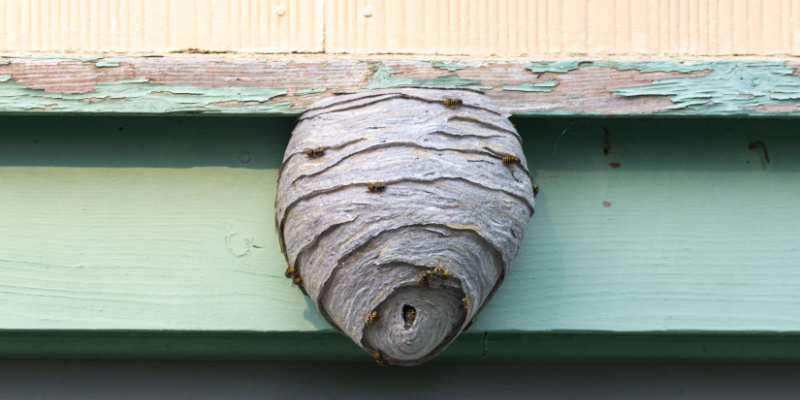Bees and wasps are fascinating and essential insects in our ecosystem, but when they build nests in close proximity to human activity, it can pose potential risks. Understanding the common places where bee and wasp nests are often found can help you be more aware and take appropriate measures to coexist safely. Let’s investigate the typical hiding spots of these insects and provide insights into their behavior to promote a harmonious balance between nature and human habitats.
1. Eaves and Overhangs
One of the most frequent locations for bee and wasp nests is under eaves, roof overhangs, and other sheltered spots on buildings. These areas provide protection from the elements and easy access to nearby food sources, making them ideal nesting sites. Yellowjackets and paper wasps, in particular, are notorious for building their nests in these sheltered locations.
2. Trees and Shrubs
Bees and wasps often choose trees and shrubs as nesting spots due to the availability of both shelter and food sources. Trees with hollows or cavities, such as dead trees or tree stumps, can provide suitable nesting sites for certain species of bees. Similarly, shrubs with dense foliage can offer bees and wasps a hidden spot to establish their nests.
3. Attics and Wall Voids
Bee and wasp nests hidden within attics and wall voids can pose unique challenges for homeowners. In search of secure and secluded locations, these insects can find their way into your home through small openings and build nests in these spaces. The insulation and structural materials provide warmth and protection, making attics and wall voids attractive nesting sites.
4. Underground Burrows
Some species of bees, such as ground-nesting bees and yellowjackets, prefer to establish their nests underground. These insects create burrows in the soil where they construct their nests. These nests can be found in gardens, lawns, and other outdoor areas with loose soil.
5. Roof Rafters and Ceiling Joists
Within structures like barns, sheds, and garages, roof rafters and ceiling joists offer suitable spots for bees and wasps to build their nests. These locations provide stability and support for the nest while allowing the insects to remain hidden from view.
6. Outdoor Furniture and Equipment
Unused outdoor furniture, gardening equipment, and playground equipment can become potential nesting sites for bees and wasps. These objects provide the insects with sheltered and undisturbed areas where they can establish their nests away from human activity.
7. Utility Boxes and Electrical Fixtures
In urban environments, utility boxes, electrical fixtures, and junction boxes may provide appealing nesting spots for certain bee and wasp species. The enclosed spaces and warmth generated by these structures can mimic natural nesting conditions.
8. Unattended Containers
Containers such as barrels, buckets, and even children’s toys left outdoors can become nesting sites for ground-nesting bees and wasps. The insects take advantage of the hollow spaces within these items to create their nests.
9. Garden Structures
Garden structures, such as pergolas, trellises, and gazebos, can also be chosen by bees and wasps for nest construction. The structure’s design can offer both protection and stability, making it an attractive location for these insects.
As important pollinators and contributors to our ecosystem, bees and wasps play a vital role in maintaining biodiversity. However, their presence near human habitats can lead to potential risks and conflicts. By understanding the common places where bee and wasp nests are found, you can take proactive steps to prevent or manage infestations. When dealing with nests, it’s often best to seek professional assistance from Abarb Pest Services to ensure the safety of both humans and these essential insects. By fostering a coexisting environment that respects the habitats of bees and wasps, we can strike a balance between conservation and human comfort.
